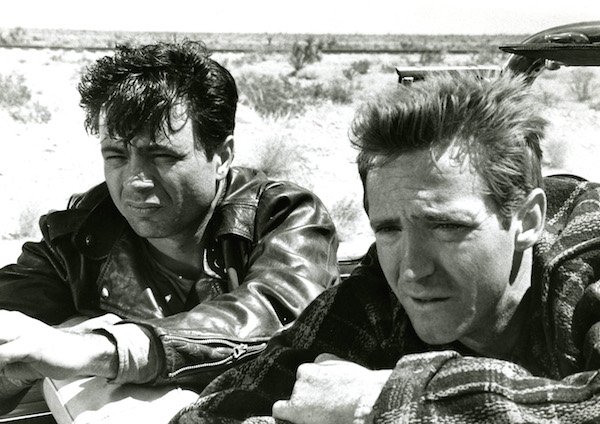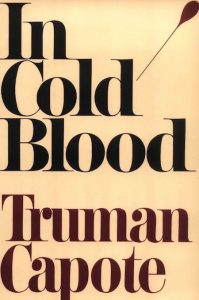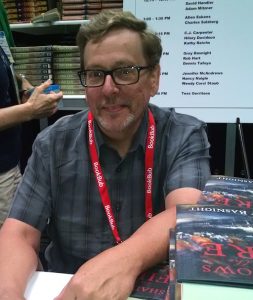 As a 14-year-old in 1967, my principal reason for living was marathon listening to Sgt. Pepper and Magical Mystery Tour. Distraction arrived at the end of the year in the form of a movie that immediately earned lifelong status as my favorite crime flick. From the standard list of film genres, it also rates near the top of my favorite drama and horror films. The accolades do not stop there. It was based on a book that is one of the best and scariest crime novels ever penned.
As a 14-year-old in 1967, my principal reason for living was marathon listening to Sgt. Pepper and Magical Mystery Tour. Distraction arrived at the end of the year in the form of a movie that immediately earned lifelong status as my favorite crime flick. From the standard list of film genres, it also rates near the top of my favorite drama and horror films. The accolades do not stop there. It was based on a book that is one of the best and scariest crime novels ever penned.
I am talking about Truman Capote’s literary masterpiece In Cold Blood, and the black-and-white cinematic tour de force of the same name written for the screen and directed by Richard Brooks. It’s rare that both book and film work so magnificently. It happens here largely because both are honest, in depth studies of two soulless men stalking a twisted version of the American dream. The movie’s semi-documentary style is so authentic that at times it seems captured by the omnipresent security cameras we now endure in our post 9/11 world. That’s real. And real is scary.
The opening scene ushers the coming horror with a desperate warning from a muted jazz trumpet as a Kansas City-bound bus barrels straight toward the audience. From that head-on crash into our sensibilities, we’re essentially made accomplices to Dick Hickock’s and Perry Smith’s perverse road trip that unfolds in episodic chiaroscuro. From car, to motel, to roadside toilet, to flashback, and back to car — we witness the slow peeling back of their scorching pathologies.
We do not view the home invasion and quadruple murder until the middle of the film, long after fate has taken us by the hand. When we finally suffer their loathsome deed, it’s a morbidly visual patchwork of our most iconic fear — that of waking to find nervous, whispering men standing in our darkened bedroom. As bystanders, we see the victims grasp that these men are true sociopaths and that they will not live to see morning.
The final third of the film is a prison drama that ultimately delive rs the audience a classic catharsis. We journey through our killers’ interrogation, trial, stint on death row, and finally their respective slow walks up the staircase to a hangman nicknamed “We the People.”
rs the audience a classic catharsis. We journey through our killers’ interrogation, trial, stint on death row, and finally their respective slow walks up the staircase to a hangman nicknamed “We the People.”
Perry Smith’s final words are, “I’d like to apologize, but who to?” The answer is: to us, the spectators of his wasted life. The dramatic soundtrack of his slo-mo execution is age old, but works with ageless theatrical impact: the beat…beat…BEATING of the human heart. It increases in volume. Then fades. Then stops.
I first saw In Cold Blood in Richmond, Virginia, a few weeks after reading the controversial non-fiction novel for extra credit as a high school freshman. Over the years, the film’s capacity to terrify has never dimmed, particularly the eerily transcendent performances of Robert Blake and Scott Wilson as Smith and Hickock. In his original four-star review, Roger Ebert wrote that the two are “so good they pass beyond performances and almost into life.”
Hollywood, too, knew it was important. In Cold Blood was nominated for four Oscars: Best Director, Best Screenplay Based on Material from Another Medium, Best Cinematography, and Best Original Score for Quincy Jones. It deserved to win all four. The fact that it won none was, itself, a crime. But then, it was up against In the Heat of the Night, Bonnie & Clyde, and Cool Hand Luke. Wow, good for you, 1967. What a great year that was for high quality crime movies!
—Gray Basnight
Gray Basnight’s forthcoming novel, The Dear John File, a thriller centering on discovery of a secret FBI diary revealing historic government crimes, will be published in 2018. The Cop with the Pink Pistol, singled out by Library Journal as Novel of the Month, was published in 2012. Shadows in the Fire ( 2015) is a Civil War historical set in Richmond. Prior to writing fiction, Basnight worked for 30 years in New York City broadcast news as a producer, writer, editor, and reporter.
